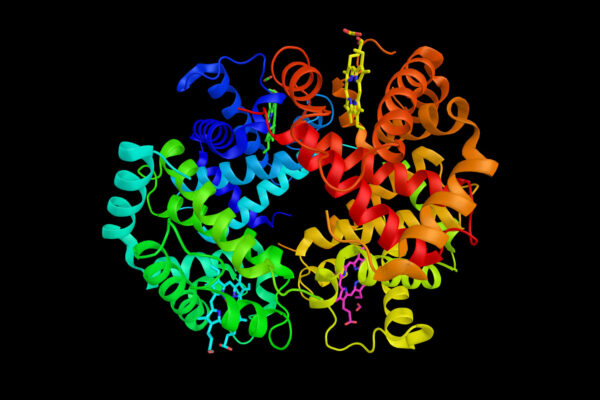
Sickle cell disease (SCD) is a hereditary blood disorder caused by malformed β-globin protein in red blood cells. It has long been a target for ongoing gene-editing therapy research. Recently published results1, building on prior work2, achieved the stable conversion from a faulty β-globin gene sequence to the functional Makassar version in nonhuman primates (NHPs). This represents an important development in the provision of more clinical options for humans afflicted with the condition. Scientists used adenine base editors (ABEs) to correct the single nucleotide change responsible for SCD, resulting in the promising outcome.
The study’s primary objective was to assess the feasibility, long-term efficacy, and safety of ex vivo base editing in NHPs, a preclinical large animal model. The approach involved enriching for NHP hematopoietic stem cells (HSCs) and using ABE8e-NRCH base editor mRNA delivered by electroporation to conduct autologous ex vivo editing. The edited HSCs were then combined with unmodified cells and infused into animals after myeloablative total body irradiation.
The Makassar locus showed over sixty percent editing efficiency within bulk HSCs. Notably, the base editing did not impact myeloid and erythroid differentiation of HSCs, demonstrating the safety and reliability of the procedure. Clonal analysis revealed that more than ninety percent of HSCs in the infusion product were edited, with over twenty percent exhibiting biallelic editing.
One of the most significant findings was the stable editing of over twenty percent observed in peripheral blood white blood cells (WBCs) and across all lineages throughout the 200-day follow-up period. Additionally, the bone marrow stem cell compartment fully recovered to baseline within six months post-transplant, demonstrating the resilience and stability of the edited cells.
Among the risks associated with gene editing therapies in general are the occurrence of off-target edits and chromosomal rearrangements, which can cause genomic instability in the edited cells. They also represent an elevated risk of the modified cells themselves becoming cancerous in a patient. Importantly, no recurring off-target effects or chromosomal rearrangements were revealed after analysis via directional Genomic Hybridization (dGH) and comprehensive assessment of Next-Gen Sequencing (NGS) data.
The successful base editing of NHP HSCs brings added hope for treating SCD in humans. With an editing efficiency closely matching that observed in human patient HSCs, these findings have significant implications for the application of base editing in patients with hematological diseases. The study points the way for further clinical advancements.
References
1. Radtke, S., Fields, E., Newby, G. A., et al. (2023). Efficient and Stable Makassar Base Editing in Nonhuman Primates. Blood, Volume 142, Supplement 1, 2023, Page 484, ISSN 0006-4971, doi.org/10.1182/blood-2023-178732.
2. Newby, G. A., Yen, J. S., Woodard, K. J., et al. (2021). Base editing of haematopoietic stem cells rescues sickle cell disease in mice. Nature, 595(7866), 295–302. doi.org/10.1038/s41586-021-03609-w
